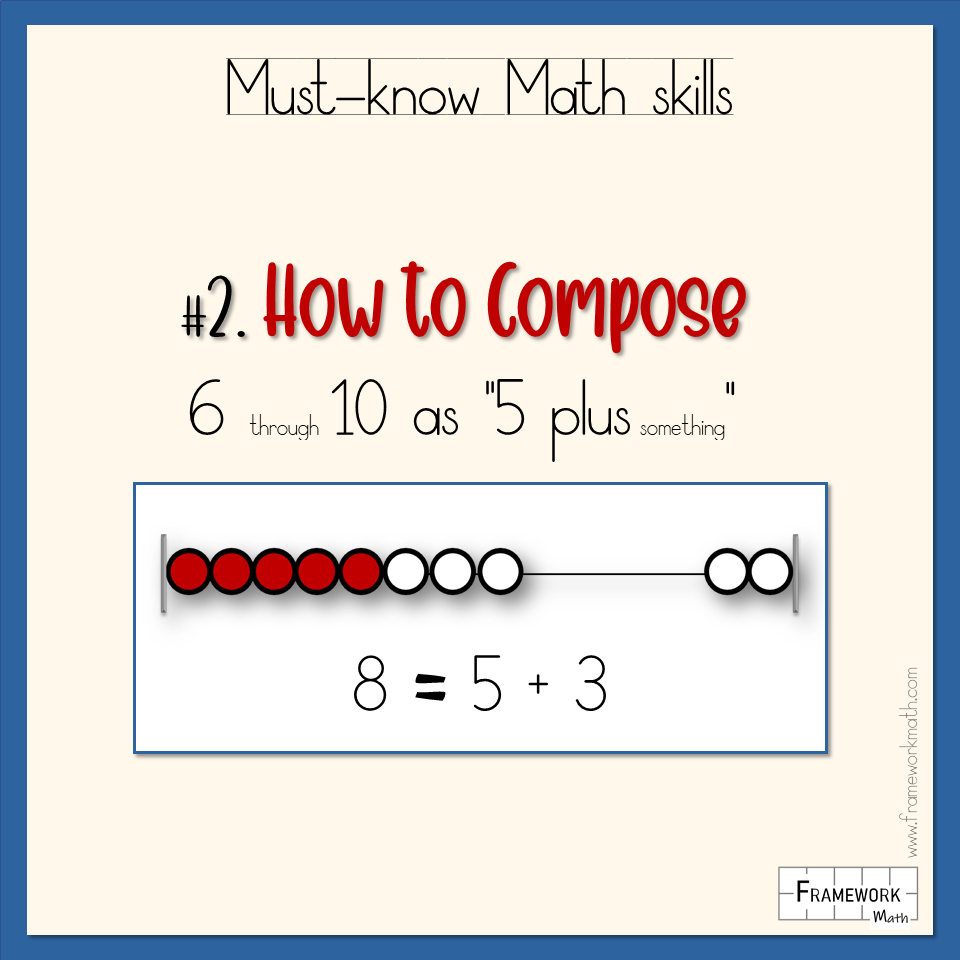What does “compose” mean, and how does it work?
Part 2 in our #numbersenseseries: The "5 plus-es"
Following on the heels of learning to subitize (see post 1) numbers 1 through 5, students can practice building, seeing, and instantly recognizing numbers 6 through 10 as a combination of 5 plus something more.
This makes the numbers 6 through 10 subitizable as well, when the groups of 5's are distinct colors (like on the Rekenrek pictured above.)
With a bit of practice, students will be able to instantly see (with the manipulative, on paper, and in their head) a number like 8 as a combination of 5 and 3.
... and see that 5 and 3 make 8.
... Or that 4 and 4 can be regrouped into 5 and 3, which is 8.
... Or that 8 and the leftover 2 make a complete 10.
... And all the related fact family pieces also fall into place. (8 - 5 = 3. 8 - 3 = 5. 2 + 8 = 10. 10 - 8 = 2 ... etc.)
Students can develop so much intuition about numbers simply by seeing them in these sub-groups of 5's within 10's.
This puts Math much more in their control, since they can see and re-arrange numbers into something recognizable.
This paves the way for addition strategies that launch students far beyond counting and memorization. (The addition strategy series will follow this number sense series.)
Depending on age and ability, students may need a few minutes up through a few weeks to get these basic skills down solid, but these essential skills are important for everyone to learn, even if it seems like back-tracking temporarily.
These basic skills will serve as the key element to becoming fluent in the language of Math and mastering a deep, conceptual understanding of how Math works.
Follow us on Facebook (page or group) or browse the blog posts here for more quick tips on using a Rekenrek to help your learners build a conceptual understanding of Math, rather than simply memorize Math facts and procedures — and feel free to share if you find these helpful!
Quick Practice:
Find a Rekenrek.
You can buy one, build one, or use a free online version. See suggestions here.
Help your learner build numbers 6 - 10 on a Rekenrek.
Start with all beads on the right. Slide beads to the left as you use them.
Once they are comfortable building numbers, show them a number from 6 through 10 and see if they can instantly recognize how many beads there are without counting.
Ask: Show them any number from 6 - 10 and have them cover up the group of 5 (all the red beads) and tell you how many are leftover.
Ask: Make the number 7, hide the group of 5 red beads, and while the student is looking at the 2 white beads that you haven’t covered ask what the total number of beads is.
Ask: Make the number 6, then hide the 1 white bead so only the 5 red beads are showing. Tell them you have 6 beads and ask them how many you are hiding.
Ask: Can you picture 9 beads on a Rekenrek in your head? What does it look like?

